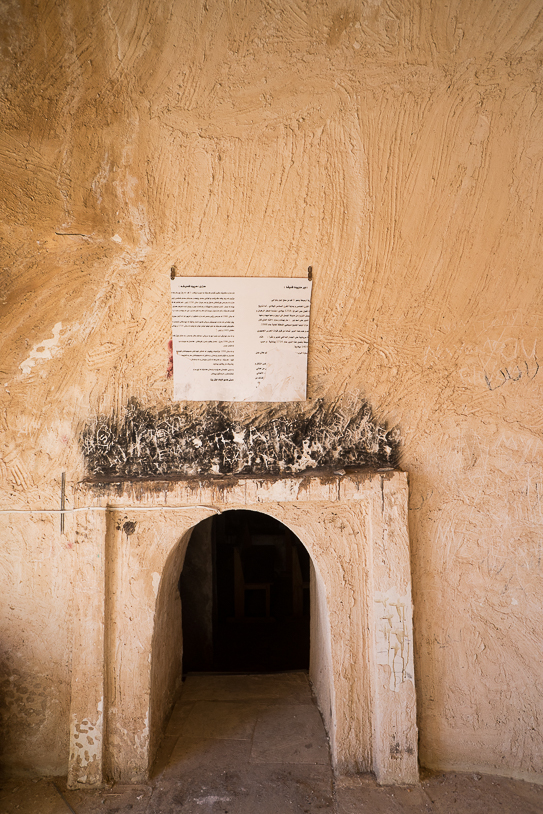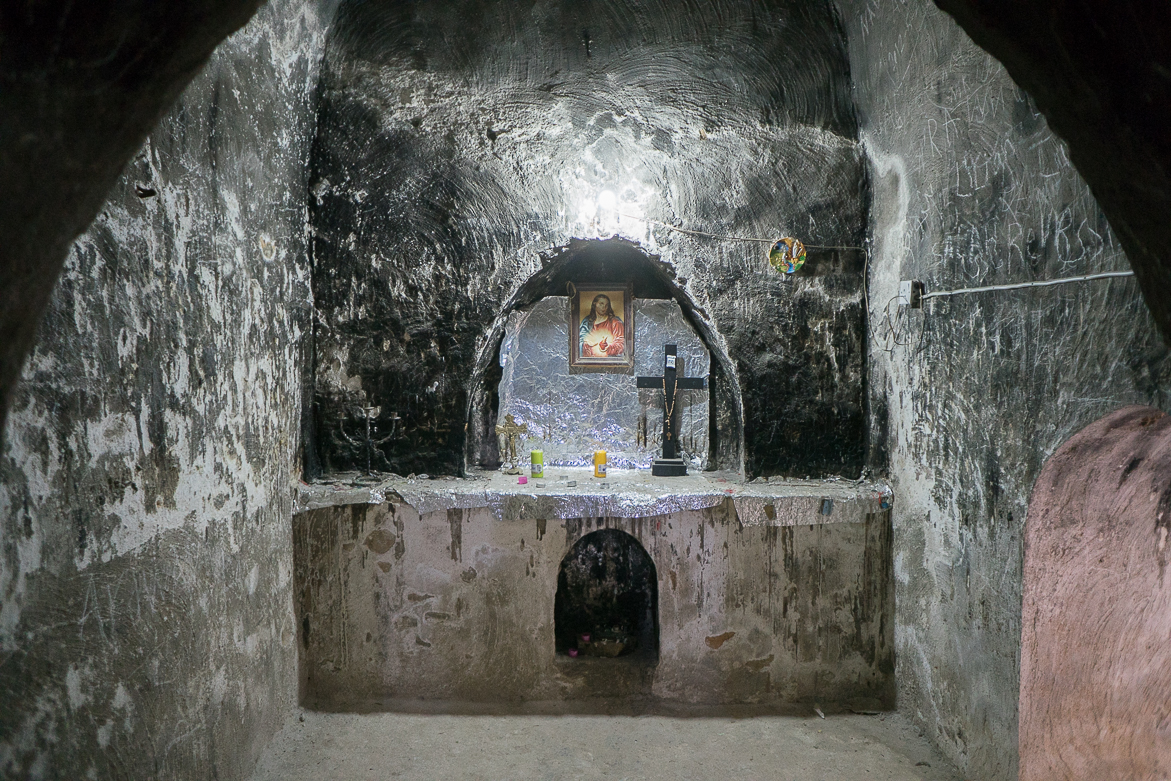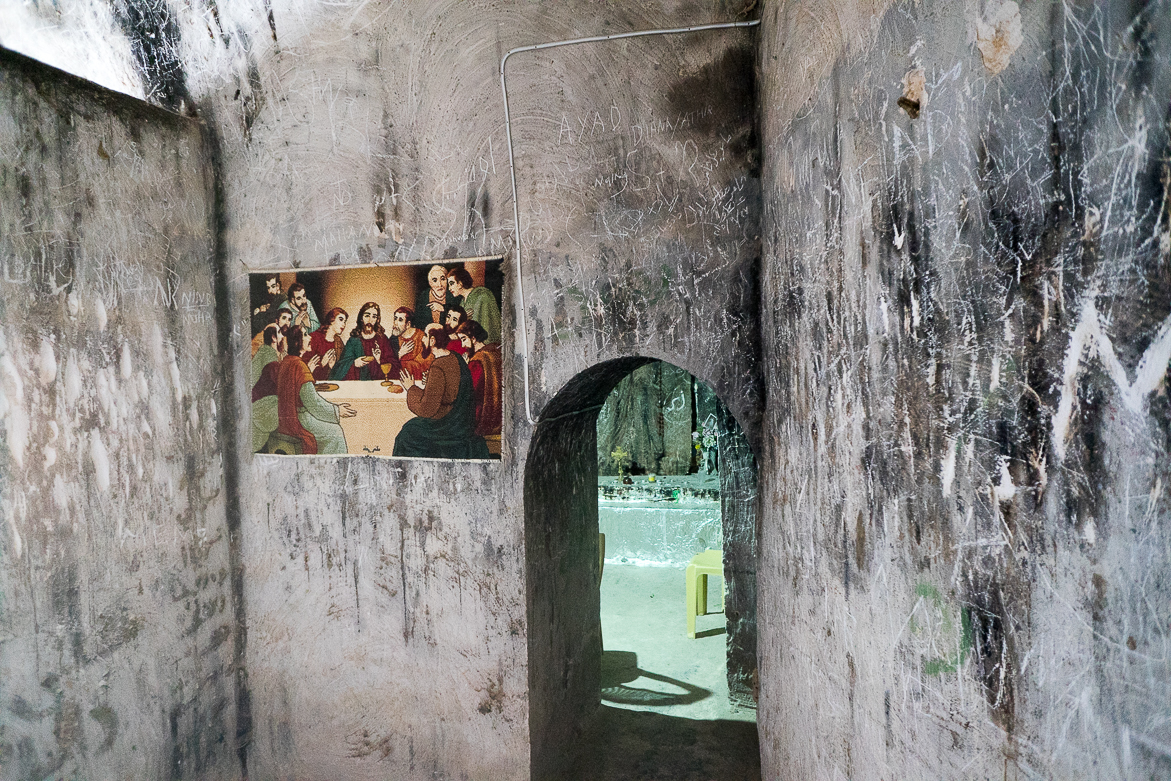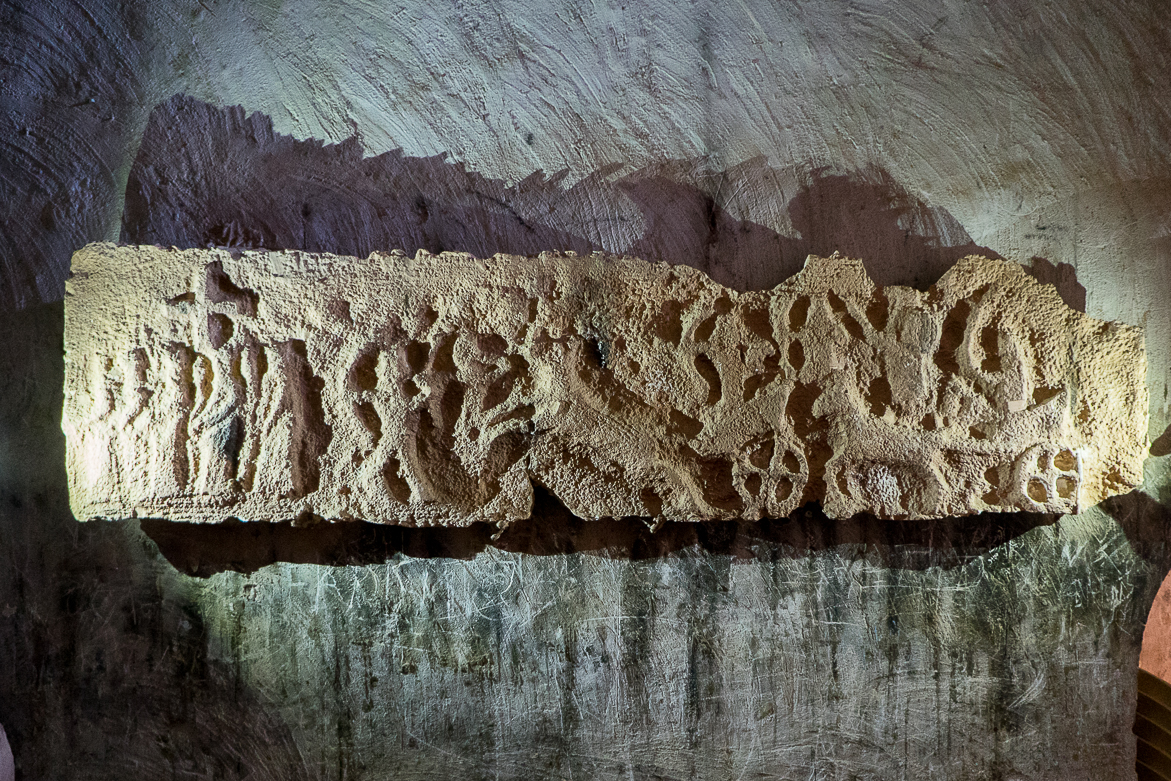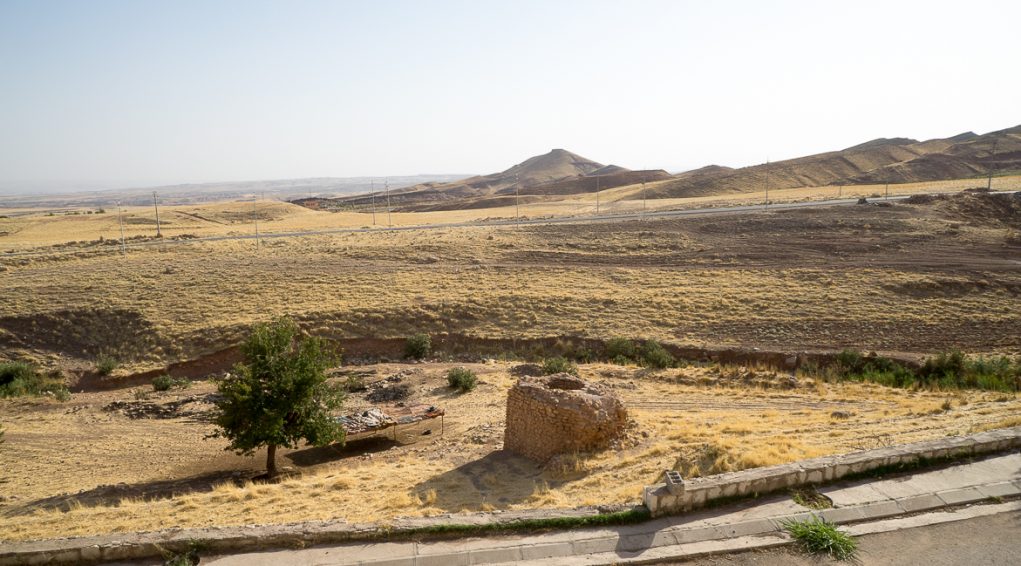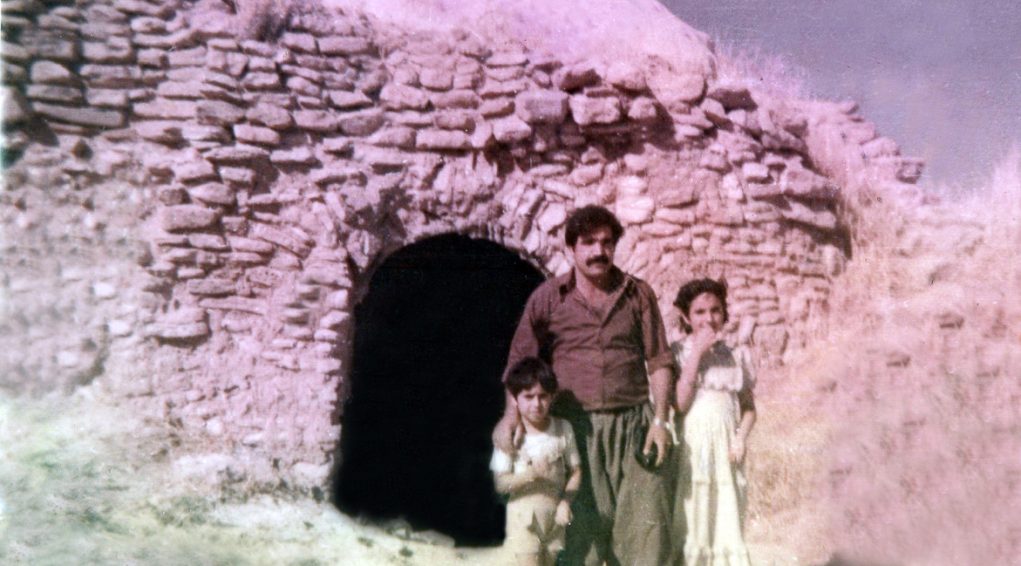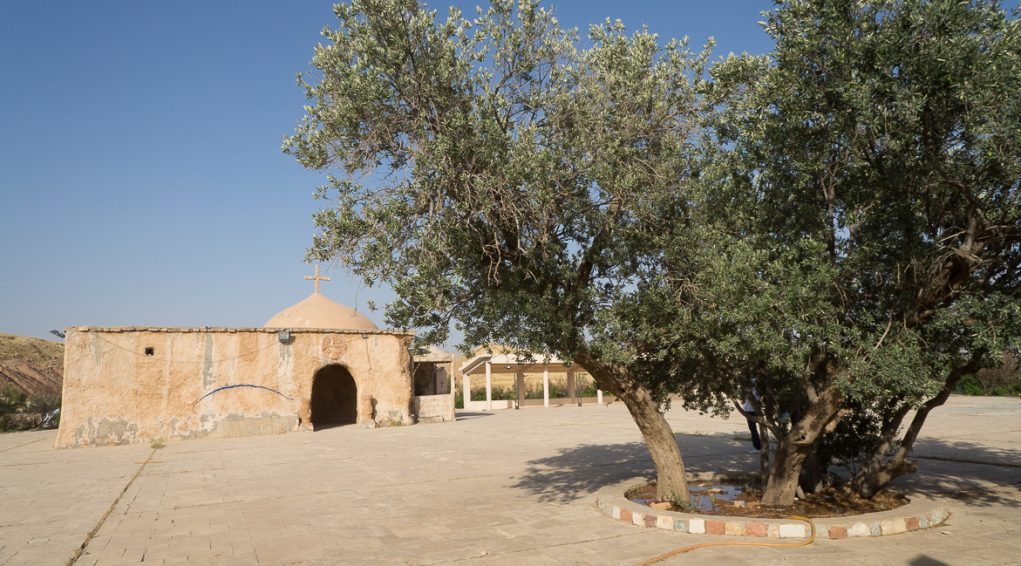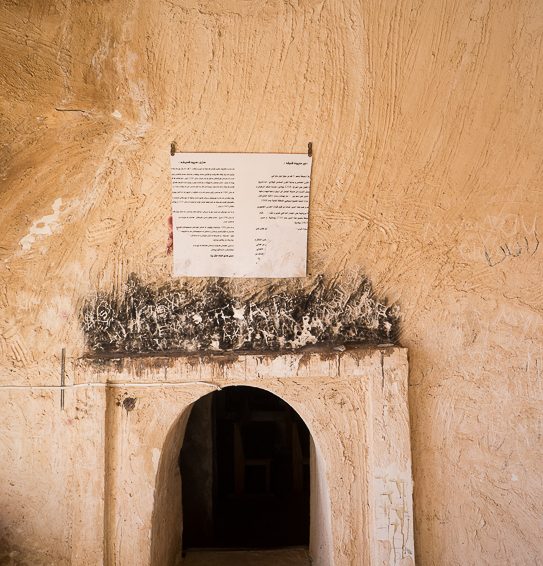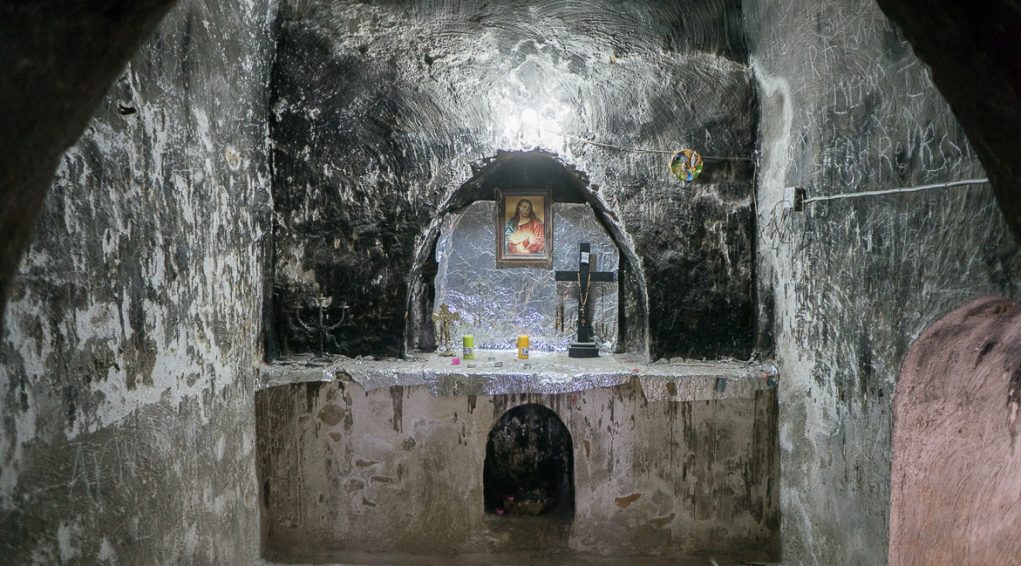The Mar Bena church in Koy Sanjaq
The Mar Bena church is located in 36°04’50.2″N 44°38’35.2″E and 564 metres’ altitude in the territory of Koy Sanjaq, 73 km to the east of Erbil, regional capital of Iraqi Kurdistan and 87 kilometres north of Kirkuk.

The history of this place is not entirely clear. The name of the church, known locally as Mar Bena, suggests it might be linked to the history of Mar Behnam and Mart Sarah, martyrs and emblematic figures of the Christianisation of Iraqi Mesopotamia.
Plan of Mar Bena church in Koy Sanjaq © In « Les églises et monastères du Kurdistan irakien à la veille et au lendemain de l’islam », PhD thesis by Narmen Ali Amen. Saint Quentin en Yvelines University. May 2001, p.177
Location
The Mar Bena church is located in 36°04’50.2″N 44°38’35.2″E and 564 metres’ altitude in the territory of Koy Sanjaq, 73 km to the east of Erbil, regional capital of Iraqi Kurdistan and 87 kilometres north of Kirkuk.
Close to the village of Tobzawa, the town of Koy Sanjaq, with its 45,000 inhabitants, is located at the foot of the Bawagi mountain range. The Mar Bena church is located a short distance from the town.
History
The Mar Bena (or Behnam) church is known as a Der, i.e. a monastery, which it may well have been in the past.
The history of the place is not entirely clear. The name of the church, known locally as Mar Bena, suggests it might be linked to the history of Mar Behnam and Mart Sarah, martyrs and emblematic figures of the Christianisation of Iraqi Mesopotamia. The tradition recounts that, at the time of the persecutions of the Persian King Shapur II (4th century), at the time of the Christianisation of Assyria, the monks and priests at the Mar Behnam sanctuary (the future monastery) in Khidir[1] moved and settled in Armota, where they built a monastery of the same name as the one they had just left. This tradition is unverifiable.
Another much more likely account from a historical perspective reports a Christian presence in Armota at the time of the Mongol invasions. They are said to have settled there and founded a monastery. The Mar Bena monastery could therefore have been built in the 12th and 13thcenturies. This is suggested by a date found when the church was rebuilt.[2] Another inscription inside the building, prior to its destruction, indicates it was constructed at a later date, in the year 1403, by a dignitary from Armota named Caikhwa Aughane.[3]
Nowadays Armota is a district of the town of Koy Sanjaq, in which the Mar Bena church is located and where several hundreds of Christian families live.
In 1988 the monastery was entirely destroyed by the Iraqi government, under Saddam Hussein’s regime. The church we can see here today was entirely rebuilt in 1996. This reconstruction was initiated by Yacoub Basa and his children in consultation with a committee in Koy Sanjaq and Armota which collected the necessary donations and contributions. [4]
_______
[1]See the file on the Mar Behnam and Sarah monastery.
[2] Source Narmin Ali Amin and J.M. Fiey
[3] Source identified by Ibrahim Lallo, in the book “Monasteries of Irak” by Albert Abouna and in the “Encyclopedia of oriental monasteries” by Benjamin Haddad).
[4] Source identified by Ibrahim Lallo, in the book “Monasteries of Irak” by Albert Abouna and in the “Encyclopedia of oriental monasteries” by Benjamin Haddad)
Layout of the religious estate and description of the church
The Mar Bena church in Koy Sanjaq is the point where the religious estate converges with a vast esplanade which contains a pleasure garden, an open-air altar and a huge statue of the Virgin Mary. Behind this esplanade there is also a large cemetery.
The new church was rebuilt “traditionally”, although this was not officially a reconstitution of the destroyed church. The old photographs[1] of the building (before its demolition in 1988), show a simple stone building. The overall appearance of the current building, both from the outside and inside, appears to draw on this past and creates a certain confusion.
That said, the rustic style of the current Mar Bena church in Koy Sanjaq has a certain charm with the sand-coloured patina of its exterior coating.
Its relatively modest size means it could be mistaken for a sanctuary but it is indeed a church.
Almost cubic in form, the Mar Bena church in Koy Sanjaq is made up of several sections:
A semi-circular narthex (vestibule), an oratory, a martyrion where the relics of saints are worshipped and the church itself which is a single nave structure with royal door, behind which the sanctuary is mounted with a small cupola capped with a rudimentary dome.
The interior of the Mar Bena church is deliberately sombre, creating an almost troglodyte effect. Outside, a small oratory dedicated to the Virgin Mary adjoins the south wall, to the right of the entrance.
A number of very unusual decorative features (haut-relief murals and bas-relief pictures) have been added to the interior of the church and the exterior walls. These works have also been given an ancient look and complete the ensemble in an original manner.
______
Monument's gallery
Help us preserve the monuments' memory
Family pictures, videos, records, share your documents to make the site live!
I contribute










